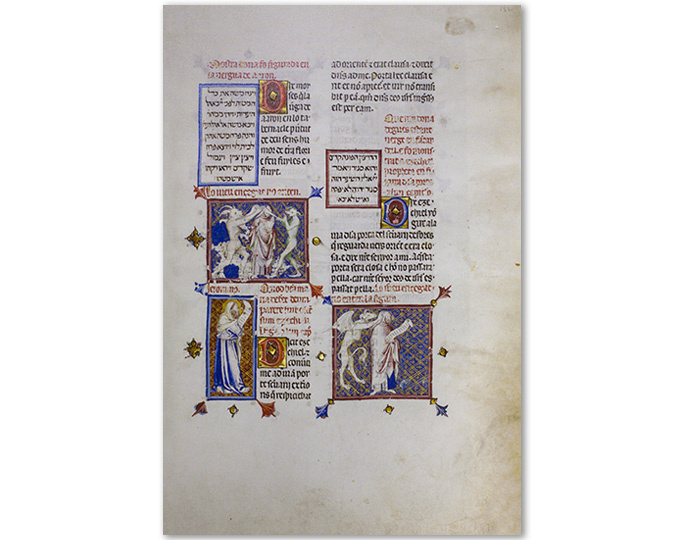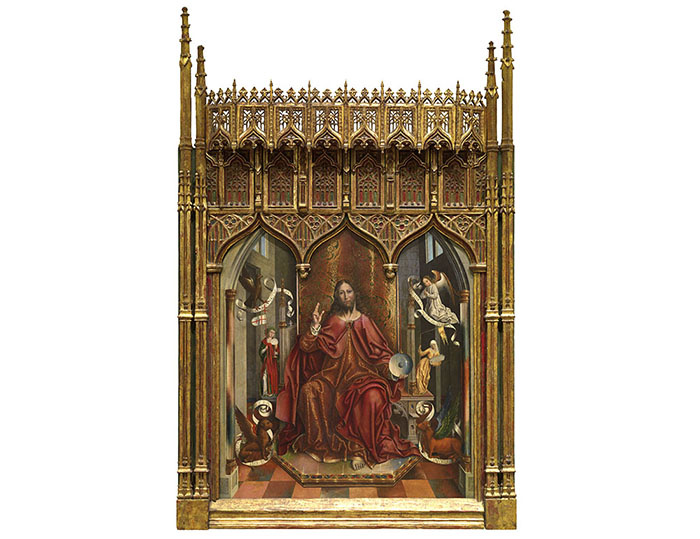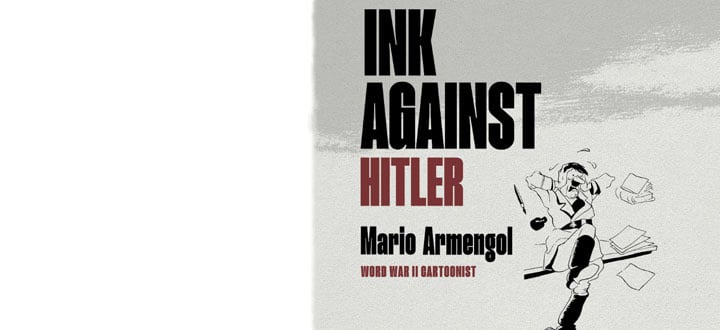From Forerunners to a Blind People
According to the Christian concept of Salvation History, the so-called Old and New Testaments are inextricably linked. That is why prominent Jewish kings and prophets were common subjects of Christian iconography, where they were represented as prefigurations of the New Law. In contrast to this positive view, from the 13th century onwards Christian theologians developed a distinctly belligerent attitude of negatively stressing the Jews’ inability to accept Jesus’ divine nature. Images, like texts, echoed this controversy through the explicit metaphor of the Jews’ blindness, a theme that was widely disseminated and reproduced in all kinds of works and media. Although many authorities continued to argue that it was possible for the Jews to convert to Christianity, the visual recreation of this blindness paved the way for constructing their alterity. Through their denial of the Messiah, the Jews began to become the Other.
Matfre Ermengaud, Breviari d’amor
Christian prejudice about Jewish blindness is expressed in a large series of images in the Breviari d’amor, an encyclopaedic text composed by the Franciscan Matfre Ermengaud around 1288. The work was widely circulated during the 14th and 15th centuries in the south of France and in Catalonia, where sumptuous illuminated copies were produced. In some codices, such as the one on display from the British Library, the Catalan text is accompanied by a Hebrew translation of the biblical passages which, according to the author, the Jews refuse to accept as prophecies of the coming of the Messiah. The images emphasise this misinterpretation and attribute it to the intervention of the devil.

Blindness of the Jews” in Matfre Ermengaud of Béziers, Breviari d’amor, c. 1375-1400
Illuminated parchment, 365 x 250mm
London, British Library, ms. Yates Thompson 31, fol. 132r
The Church and the Synagogue
Medieval theologians and church leaders subscribed to the idea of the need for Jewish people to exist within Christendom in order to remind the world of their obstinacy, their blindness in refusing to recognise the Messiah. They were following the assumptions of Saint Paul and Saint Augustine, who prophesied that the Jews would accept the Scriptures and convert at the end of time. Allegories of the Church and the Synagogue and scenes of preaching prefigure this future acknowledgement of Christianity. However, the frequent use of discriminatory and negative visual features to evoke Jews’ blindness further accentuated their stigmatisation, hindering the possibility of reconciliation.

Fernando Gallego, Christ Blessing, c. 1494-96
Oil on panel, 169 x 132 cm
Madrid, Museo Nacional del Prado, P-2647. Photos José Baztán and Alberto Otero










